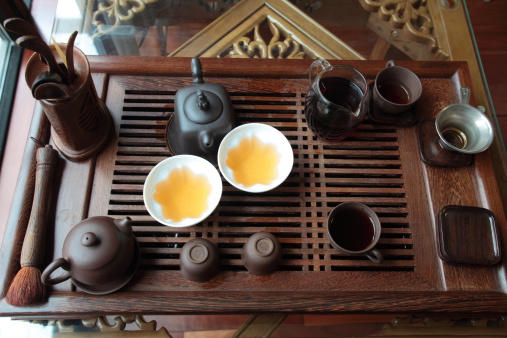How to Perform a Japanese Tea Ceremony

The Japanese tea ceremony started in China and the ritual found its way to Japan through Buddhist monks in the 9th century. These days, the event includes artistic and philosophical traditions. In order to be a good host you need years of experience and various skills that go hand in hand with spiritual growth. If you want to perform a Japanese tea ceremony then be patient and follow some important guidelines.
Things Required:
– Stoneware tea set
– Stoneware jar or mizusashi
– Bowl
– Scroll painting
– Tatami mats
– Tana or wooden stand
– Sweet appetizers
– Kettle
– Portable hearth
– Fine silk pouch
Instructions
-
1
Become a skilled host
Strive to match the standards of a good host at a tea ceremony. You should plan everything beforehand, display the flowers in a natural way, produce a feel of coolness in summer and warmth in the winter months, prepare for rain, make a tasty bowl of tea, show respect and pay special attention to the guests. There are four principles of the tea ceremony including respect, tranquility, cleanliness and harmony of soul and body. Clean the tea pot and the cups by adding loose tea in the pot and add hot water. Let it dissolve for a day or two. To clean the cups, put boiling tea into a big bowl and add the tea cups. -
2
Decide a place for the ceremony
It is important to find the ideal place to have your tea ceremony. Usually, tea ceremonies are located in a room reserved for tea known as the Chashitsu. The rooms can be in a garden or tea house. If you do not have a designated room for tea, select any quiet room in the house. However, make sure you design the room for the occasion. Try to set the room as warm and flowery. Do not go overboard in the decoration and keep it simple. You can use flowers or scrolls and place tatami mats (straw mats) for kneeling purposes. -
3
Further instructions
You need to get the room ready by installing things like a stoneware tea set, stoneware jar, wooden stand, sweet appetizers, bowl in which you will serve the appetizers, bowl to keep powdered tea, scroll painting, kettle, portable hearth, fine silk pouch to cover the chairs and mats for kneeling. After all this, ask the guests to come in and have some Japanese tea.







